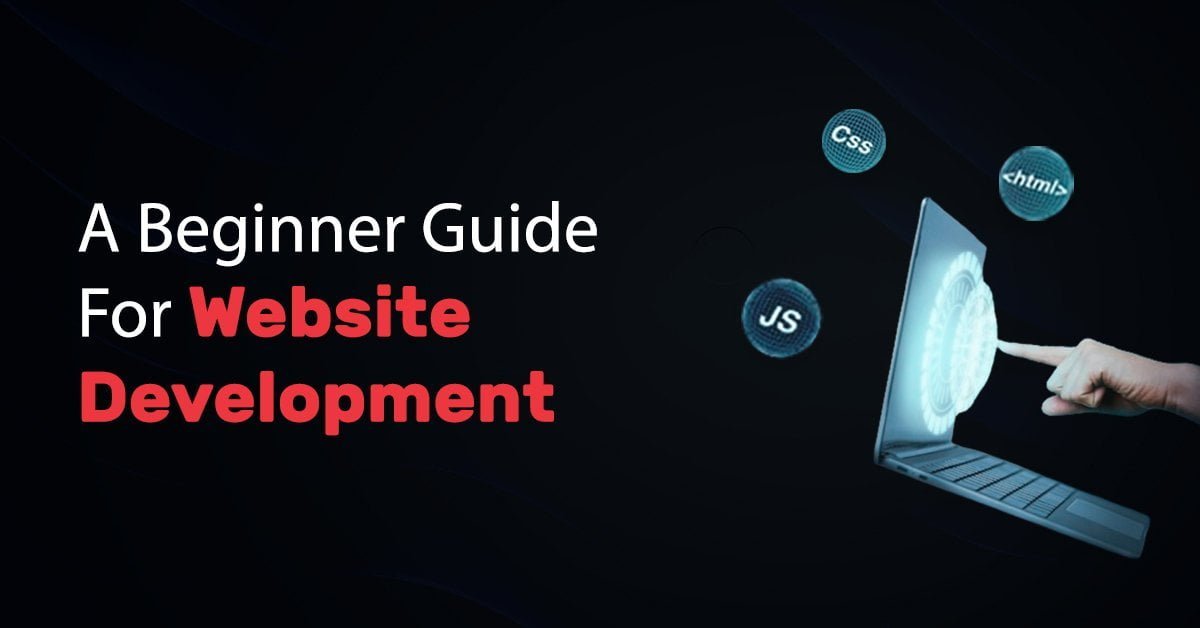Hey there, you are looking to start your career as a website developer or designer, look no further you are at the right place. Let’s talk about how it is going to work for you. What you need to learn and what kind of career you are going to get. Let’s deep dive into the guide for website development to get you the moon and horizon.
What is web development?
Website development encompasses a wide range of tasks and procedures aimed at constructing and sustaining a website. This encompasses everything from markup and coding to scripting, network configuration, and CMS development.
Having devoted numerous hours to coding and exploring website creation, I’ve come to view web development as an art form—an avenue for transforming concepts into reality. While web development traditionally focuses on web markup and coding, website development entails a broader spectrum of development activities, including client-side scripting, server-side scripting, server and network security configuration, e-commerce development, and content management system (CMS) development.
Now let’s talk about why website development is an important part.
In this world, more than 5.30 billion individuals actively connect with each other via the Internet. That surpasses half of our global population, actively participating in research, communication, education, and entertainment within this remarkable digital world. I consider the Internet not merely a luxury but an integral aspect of our daily lives. This digital reality is a new reality for business and people as well. Whether using Instagram and earning on Instagram to just using an app to buy food or maybe registering as a business owner to sell the food.
Given the swiftly rising number of Internet users, it’s unsurprising that the web development field is rapidly expanding. Between now and 2030, experts project a 13% increase in demand for web developers, surpassing the growth rates of most other technology professions.
Now let’s talk about web development or web programming
Web development and web programming may seem quite similar — and they are, with one crucial difference.
Web development encompasses the entire process of crafting websites or web applications, which includes designing, arranging layout elements, coding, creating content, and ensuring functionality. This comprehensive task involves utilizing various programming languages, tools, and frameworks to breathe life into a website or web app. It may also involve project management duties, such as addressing development requests from stakeholders or freelance clients.
On the flip side, web programming specifically deals with the coding and scripting aspects of a website, be it front-end or back-end. It primarily involves writing code to manage data, handle user inputs, and produce dynamic content. A web programmer typically won’t handle an entire web development project from start to finish. Instead, they might focus on building specific sections of a site or troubleshooting issues as they arise.
Well understanding this part is going to give you precise knowledge. Which part of web development do you want to choose as your career?
What is a website?
Websites are data stored on servers, which are computers responsible for hosting websites. These servers are part of a vast network called the Internet.
So, how do we view these websites? This is where browsers step in. Browsers are software applications that fetch and display websites using your Internet connection, examples being Google Chrome or Internet Explorer. The devices used to browse these websites are referred to as “clients”.
What is an IP address?
I’ve always been intrigued by the Internet’s ability to direct data to its destination. The key to this lies in grasping IP addresses. When you want to visit a website, you must have its Internet Protocol (IP) address. This address is a distinct sequence of numbers assigned to each device, serving to differentiate it within the vast network of billions of websites and devices linked through the Internet.
You can discover your device’s IP address by typing “What’s my IP address” into your search browser.
Although it’s possible to access a website using its IP address, many Internet users opt to use domain names or search engines instead.
What is HTTP?
The HyperText Transfer Protocol (HTTP) is the mechanism that links our requests for websites to the remote servers storing all website data. It consists of a set of rules (a protocol) that specifies how messages are transmitted over the Internet. This protocol enables us to navigate between pages and websites seamlessly.
When I enter a website address into my web browser or search for information using a search engine, HTTP establishes a framework for the client (computer) and server to communicate effectively. It ensures they use a common language for making requests and receiving responses across the Internet. Essentially, HTTP acts as an interpreter between us and the Internet: it interprets our website requests, deciphers the code sent by the server, and presents it to us in the form of a website.
What is coding?
Coding involves writing code for servers and applications using programming languages. These languages are termed as “languages” because they consist of vocabulary and grammatical rules for interacting with computers. They also comprise specific commands, abbreviations, and punctuation that are interpretable only by devices and software programs.
Developers code every software using at least one programming language, although they choose the language depending on the platform, operating system, and coding style. Front-end and back-end categorize programming languages into two main types.
What is front-end programming?
The front end, also known as the client side, is the part of a website or software that is visible and interactive for Internet users. Front-end coding languages enable websites to operate smoothly without requiring constant communication with the Internet when transferring information from a server to a browser.
Front-end code facilitates user interactions on a website, such as playing videos, expanding or minimizing images, highlighting text, and performing other functions. Web developers specializing in front-end coding focus on client-side development.
What is the meaning of backend programming?
The back end, also known as the server side, is the part of the Internet that remains hidden from view during your usage. It serves as the digital backbone, appearing as a collection of numbers, letters, and symbols to those who are not developers.
There is a greater variety of coding languages used in the back-end compared to the front-end. Web browsers, operating on the front end, are limited to understanding HTML, CSS, and JavaScript due to the fact. Conversely, servers on the back end can be configured to comprehend nearly any programming language.
As of now, you have enough knowledge of what is frontend, what is backend, what is designing, and so on so. It is quite easy to get to know your interest let’s explore more of what a backend developer or a fronted developer does.
What is the role of a front-end developer?
Front-end developers focus on the side of websites, programs, and software that users directly interact with, known as the client- or user-facing side. They are responsible for creating and enhancing the visual elements, such as the layout, navigation, graphics, and overall aesthetics.
Their primary role involves constructing interfaces that facilitate users in accomplishing their objectives, which often involves contributing to the user experience aspects of their projects.
What is the role of backend developers?
While the front end is the visible part for users, the back end remains unseen. Back-end web developers focus on the servers of websites, programs, and software to ensure smooth operations behind the scenes.
They handle systems like servers, operating systems, APIs, and databases, managing code for security, content, and site structure. Collaboration with front-end developers is crucial for delivering the final products to users.
What is full stack development?
Full-stack developers are proficient in both front-end and back-end aspects of websites. They have the ability to develop a website, application, or software program from inception to completion. The term “stack” refers to the array of technologies handling various functionalities within the same website, such as the server and interface.
Companies seeking to create or modernize their websites highly seek out full-stack developers due to the extensive experience required for this role. Full-stack developers’ comprehensive knowledge enables them to enhance performance, identify issues proactively, and facilitate team members’ understanding of different aspects of web services. Comprehensive training in a full-stack developer course typically equips individuals with this broad skill set.
Now let’s talk about which kind of language developers use whether it is front-end development or back-end development for the website.
Front End development language
Front-end web developers craft the visual and interactive components of a website. This includes designing and constructing the user-facing interface, which is essentially what you observe when accessing a site through a web browser. Here are the main front-end languages for website development.
HTML, CSS, Javascript, JQuery, and React are used for front-end development. HTML (Hyper Text programming Language) is one of the basic structures for a website and making it possible for everyone there are many YouTube channels. We also tried to make it possible for you to learn HTML and CSS.
Backend development languages
Front-end developers concentrate on crafting the visible aspects of a website that users interact with, whereas back-end developers operate behind the scenes to maintain seamless functionality.
Backend development languages assist programmers in managing servers, databases, and software that drive websites and applications from my perspective. This aspect can be more challenging to learn compared to front-end development, which primarily deals with the user-facing side.
Here are some popular backend programming languages.
Python, Perl, PHP, Java, Ruby, C#, Node.js, and so on.
Having a website is crucial for businesses as it serves as their digital storefront, providing a platform to showcase products or services, connect with customers, and establish credibility in the online realm. A website enables businesses to reach a wider audience, increase brand visibility, and stay competitive in today’s digital landscape.
FRD Studio offers top-notch web development services, ensuring that businesses have professionally designed and functional websites that effectively represent their brand and attract potential customers. With expertise in creating user-friendly interfaces, responsive designs, and optimized performance, FRD Studio helps businesses leverage the power of the internet to achieve their goals and grow their online presence.
We would love to have a conversation. Whether you are interested in learning about web development. Join us on our YouTube channel for learning purposes and enjoy the large community of web developers or have a website for your business







